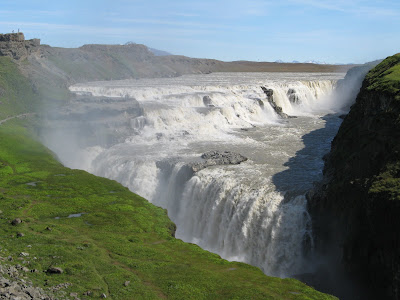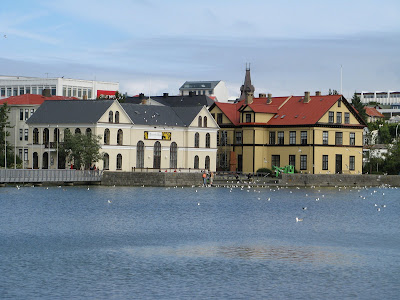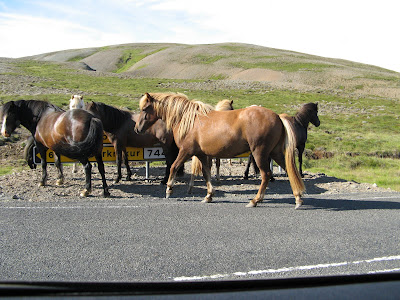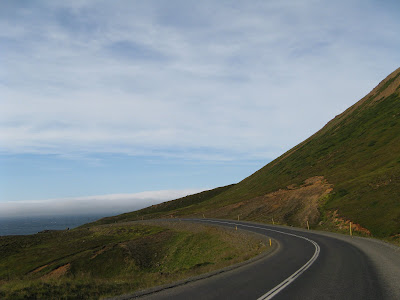
Above: The Gullfoss waterfall in southwest Iceland.

Above: Buildings overlooking lake Tjörnin in central Reykjavík, the capital of Iceland.

Above: Snæfellsjökull, a volcano with a glacier covering its summit in western Iceland. The mountain was made famous in the the novel
Journey to the Center of the Earth by Jules Verne, in which the protagonists find the entrance to a passage leading to the center of the earth on Snæfellsjökull.

Above: Icelandic horses. This breed of horse has lived in Iceland since the mid-800s AD, having been brought to the island by Viking settlers.

Above: A road to Siglufjörður, one of the most northern towns in Iceland.